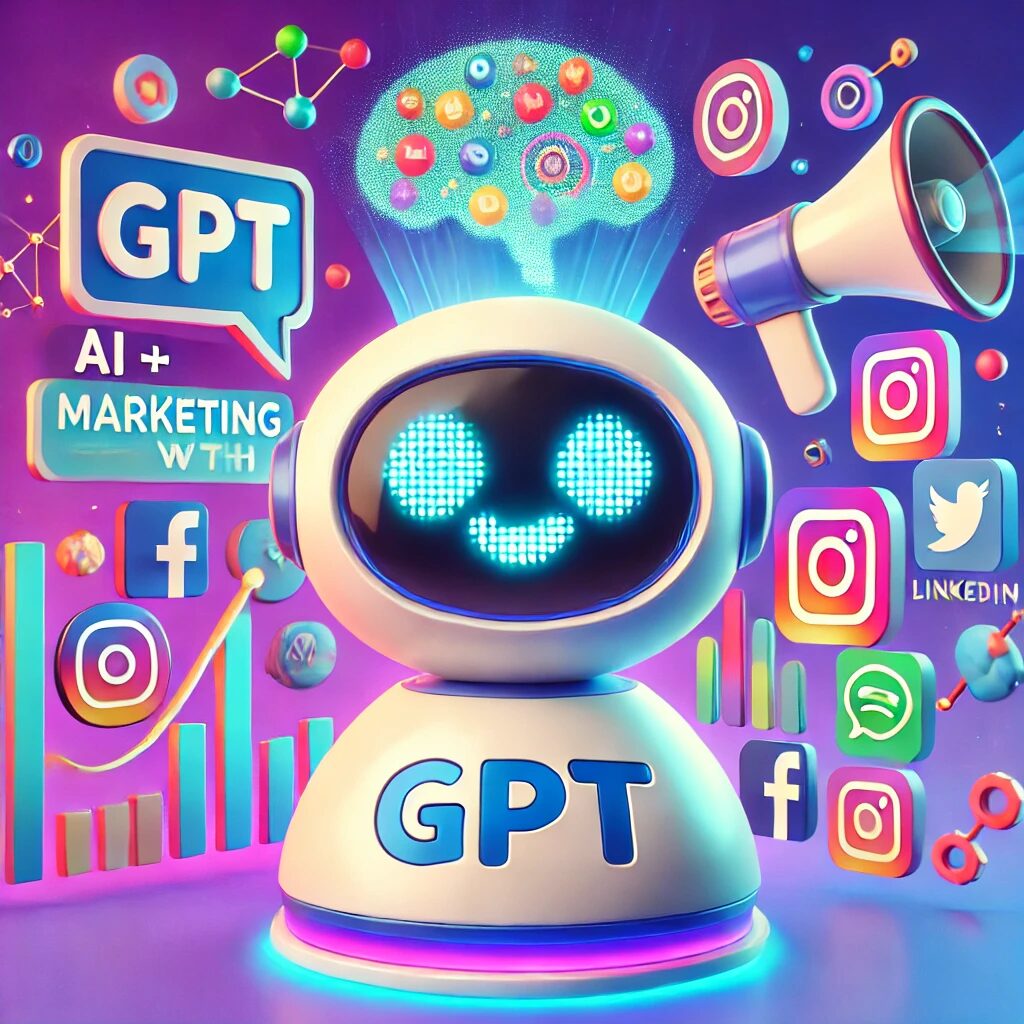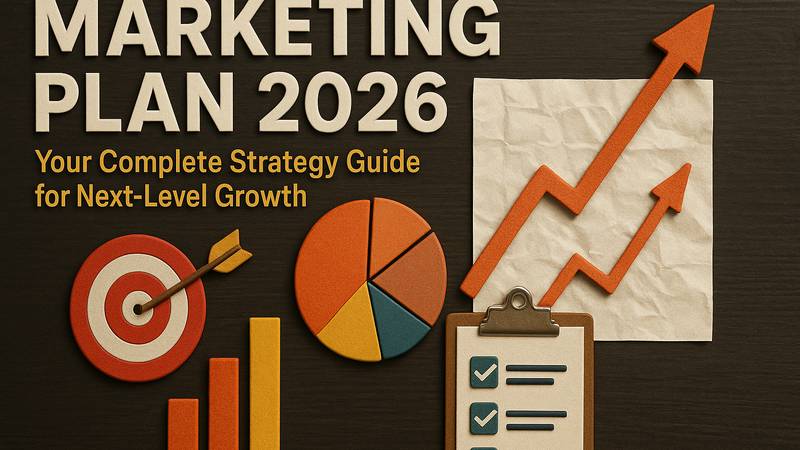
How to Use GPT for Effective Marketing: A Step-by-Step Guide
GPT, or Generative Pre-trained Transformer, is an AI model for generating human-like text. Are you curious about how GPT can revolutionize your marketing efforts? This guide answers that question by explaining its benefits, showing practical steps for implementation, and sharing real-world examples of successful campaigns.
Key Takeaways
-
GPT technology enhances marketing by automating content creation and personalizing customer interactions, thereby improving efficiency and engagement.
-
Implementing GPT requires a structured approach, including setting up tools, integrating with existing systems, and ongoing monitoring to adapt to market changes.
-
Challenges such as data privacy, content accuracy, and ethical implications must be addressed to fully leverage GPT in marketing strategies.
Understanding GPT: An Overvieww
Generative Pre-trained Transformers, commonly known as GPT, are designed to generate text by predicting the next word in a sequence based on the preceding context. These models are trained on vast amounts of text data in an unsupervised manner, allowing them to capture a wide range of language patterns and nuances.
GPT utilizes transformer architecture, which is integral in understanding complex language structures. This architecture enables the model to process and generate text that closely resembles human writing. One of the standout features of GPT is its few-shot learning capability, allowing it to adapt to new tasks with minimal additional training.
The knowledge captured in GPT models empowers them to perform exceptionally well on various natural language processing tasks. Whether it’s generating high-quality content or facilitating customer interactions, GPT’s text generation ability provides a seamless and human-like experience. Understanding these capabilities sets the stage for leveraging GPT effectively in marketing.
Benefits of Using GPT in Marketing
Incorporating GPT into your marketing strategies can significantly enhance various aspects of your campaigns. One of the primary benefits is the ability to automate the creation of high-quality content, which is essential for any successful marketing strategy. GPT enables marketers to efficiently generate articles, blogs, and social media posts, cutting down on time and resource consumption.
GPT enhances customer engagement by delivering and interacting with personalized content. This personalized approach ensures that the content is relevant and resonates with the audience, leading to higher engagement rates.
GPT integration streamlines processes and offers automated insights, enhancing campaign effectiveness. Incorporating GPT into marketing strategies provides a competitive edge by improving content creation and customer engagement.
This technology allows marketers to focus on strategic planning and creative aspects while automating repetitive tasks, ultimately leading to more impactful inbound marketing campaigns.
Types of GPT-Driven Marketing Strategies
GPT can revolutionize various types of marketing strategies by tailoring approaches based on specific audience insights. Integrating GPT tools with current marketing channels enhances data utilization and streamlines campaign management. This section explores three key areas where GPT can be effectively applied: content generation, SEO optimization, and social media engagement.
Employing GPT in your marketing strategies can lead to more effective communication and engagement with customers. From automating content creation to optimizing your SEO efforts and enhancing social media interactions, GPT offers a range of solutions to elevate your marketing efforts.
Content Generation
Using AI for content generation is a game-changer in contemporary marketing. GPT can automate the content creation process, enabling marketers to generate high-quality articles, blogs, and social media posts efficiently. This automation not only saves time and resources but also ensures that the content aligns with the brand voice and messaging.
Moreover, GPT allows for tailored responses in social media interactions, significantly improving user engagement. By leveraging this technology, marketers can maintain an active online presence and enhance the overall customer experience, making it a vital tool in any content marketing strategy.
SEO Optimization
SEO optimization is crucial for increasing website visibility and driving organic traffic. Search engine optimization can streamline the process of keyword discovery, helping marketers target the right terms effectively. By generating content that targets specific keywords, GPT enhances website visibility in search results.
Utilizing GPT for SEO involves not only keyword analysis but also optimizing content for better search engine performance. This integration can lead to improved search engine rankings, making your digital marketing efforts more successful.
With GPT, marketers can achieve a competitive advantage by staying ahead in the ever-evolving SEO landscape.
Social Media Engagement
Social media platforms are vital for engaging with your target audience and building brand loyalty. GPT can enhance social media engagement by generating personalized responses and content tailored to specific platforms. The four most important social media networks for marketers in 2023 are Facebook, Instagram, YouTube, and TikTok.
By leveraging GPT, marketers can create more effective social media campaigns, fostering stronger relationships with their audience. This personalized approach not only improves customer interest but also boosts brand loyalty and market share.
GPT’s ability to engage users on social media makes it an essential tool in any digital marketing strategy.
Implementing GPT in Your Marketing Plan
Integrating GPT into your marketing plan involves several key steps, from setting up the tools to integrating them with your existing systems and continuously monitoring and adjusting your strategies. GPT-4, for example, can facilitate real-time voice interactions, adding a personalized touch to customer service. Additionally, the concept of Retrieval-Augmented Generation (RAG) is gaining traction, allowing businesses to customize AI responses with internal data.
Integrating GPT-based tools into your existing marketing systems can enhance communication and efficiency. Continuous monitoring of your GPT-driven marketing efforts provides valuable insights for future adjustments, ensuring that your strategies remain effective and relevant.
Setting Up GPT Tools
Setting up GPT tools is the first step in implementing this technology into your marketing plan. GPT can streamline marketing efforts by automating content creation, analyzing market trends, and personalizing customer interactions. For instance, GPT can automate the creation and scheduling of social media posts, helping maintain an active online presence without constant manual input.
Moreover, GPT can assist in crafting personalized responses to customer inquiries, enhancing overall brand interaction. By leveraging these tools, brands can generate more personalized and relevant content, improving customer engagement and satisfaction.
Integrating with Existing Systems
Integrating GPT with your existing systems is crucial for maximizing its benefits. Understanding your current CRM and marketing infrastructure is essential to tailor GPT solutions that fit seamlessly within your setup. Select GPT tools that are designed to easily integrate with your existing marketing platforms for smoother operation and maximal synergy.
Ensuring compatibility between new GPT technologies and your established processes is crucial for maintaining operational continuity and optimizing marketing strategies. This integration enhances overall efficiency and effectiveness, allowing for smarter resource allocation and better communication with new customers and other businesses.
Monitoring and Adjusting
Monitoring and adjusting your GPT-driven marketing efforts are essential for long-term success. Regular updates to marketing plans are necessary to respond to shifting consumer behaviors and market conditions. Key performance indicators (KPIs) for measuring marketing plan success include search engine ranking, click-through rate, cost per click, ROI, and conversion rates.
Utilizing advanced metrics allows marketers to pinpoint successful strategies and areas needing improvement. Regular monitoring of these metrics allows for adjustments to marketing plans, market research, market segmentation, and marketing objectives, ensuring strategies stay effective and aligned with organizational goals.
Case Studies: Successful GPT-Driven Marketing Campaigns
Real-life examples of successful GPT-driven marketing campaigns can provide valuable insights into the potential of this technology. Heinz, for instance, engaged customers with an AI campaign that generated innovative ketchup designs based on creative prompts, significantly increasing social media engagement.
Similarly, Coca-Cola’s ‘Create Real Magic’ platform invited users to generate personalized content, resulting in high user engagement and over 120,000 pieces of user-generated content. Starbucks leverages AI for predictive analytics, personalizing offers based on customer purchase history, which boosts loyalty and engagement.
The case studies illustrate how GPT enhances marketing strategies with innovative solutions for customer engagement and content generation.
Challenges and Considerations
While GPT offers numerous benefits, there are also challenges and considerations to keep in mind. Data privacy issues can arise as GPT models can inadvertently expose sensitive information during content generation. Businesses must navigate regulatory compliance related to data usage when utilizing GPT technologies.
Maintaining the accuracy of GPT-generated content is challenging due to possible biases in the training data. Ethical concerns involve the risk of automated decisions without human oversight, potentially leading to unintended consequences.
Integrating GPT technology seamlessly requires maintaining data consistency across platforms to mitigate risks.
Future Trends in GPT and Marketing
The future of GPT and marketing is filled with exciting possibilities. AI’s capabilities are expanding towards more complex tasks, allowing for multi-step processes and enhanced conversational interactions. The Agentic era signifies a shift towards AI models capable of anticipating user needs and executing tasks autonomously under supervision.
Multimodal AI systems are emerging, enabling the processing of various types of inputs such as text, images, and audio. The trend towards AI-driven canvasses is changing how users interact with AI, allowing for collaborative project work beyond simple text prompts.
While quantum computing advancements may not impact marketing immediately, they represent a future potential for exponential increases in computational power.
Summary
Incorporating GPT into your marketing strategies can revolutionize the way you approach content creation, SEO optimization, and social media engagement. By understanding its capabilities, benefits, and implementation strategies, you can leverage GPT to stay ahead in the competitive digital marketing landscape. Embrace this technology to enhance your marketing efforts, create compelling campaigns, and engage with your audience more effectively.
Frequently Asked Questions
What is GPT and how does it work?
GPT, or Generative Pre-trained Transformer, is an AI model that generates text by predicting the next word in a sequence based on prior context, utilizing transformer architecture and extensive text data for training. This enables it to create coherent and contextually relevant text outputs.
How can GPT benefit my marketing strategies?
GPT can significantly enhance your marketing strategies by automating content creation, optimizing SEO, and fostering personalized customer engagement, leading to more effective outreach and improved results.
What are some successful examples of GPT-driven marketing campaigns?
Heinz’s AI-generated ketchup designs, Coca-Cola’s ‘Create Real Magic’ platform, and Starbucks’ personalized offers demonstrate successful GPT-driven marketing campaigns. These examples showcase the effective use of AI in engaging consumers and fostering creativity.
What challenges should I consider when using GPT in marketing?
When using GPT in marketing, consider challenges such as data privacy issues, regulatory compliance, potential biases in training data, and ethical concerns regarding automated decision-making. Addressing these challenges is crucial for successful and responsible implementation.
What future trends should I watch for in GPT and marketing?
Future trends to watch in GPT and marketing include the rise of autonomous AI models, the development of multimodal systems that can process diverse input types, and the potential impact of advancements in quantum computing. Staying informed on these innovations will be crucial for leveraging AI effectively in marketing strategies.
Want More Email Marketing Tips?
Looking for more in-depth advice on how to grow your list, plan seasonal campaigns, or automate your post-purchase emails? Check out our latest guides and resources to elevate your email marketing game and keep your subscribers excited year-round!
© 2025, VerticalResponse. All rights reserved.



